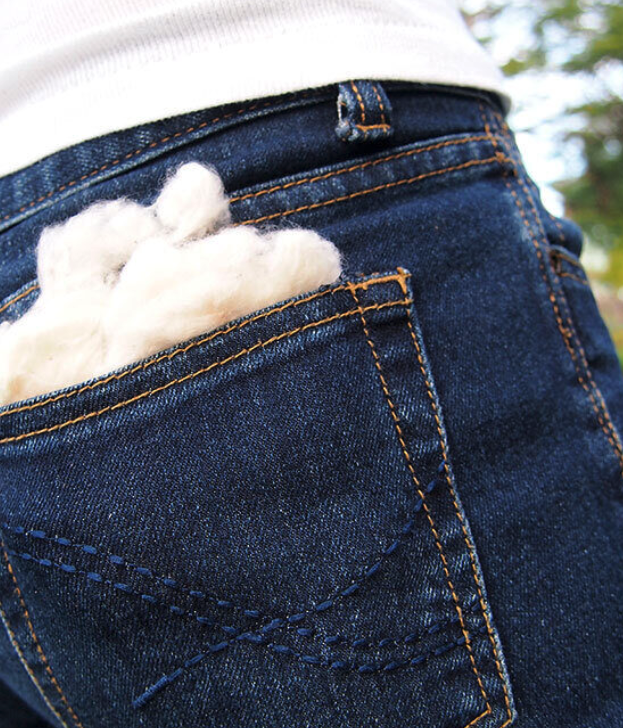They’re a closet staple, but how exactly does Australian cotton turn into a fashionable pair of jeans? Cotton Australia helps explain the process, step-by-step.

Groundwork

image: Cotton Australia
Cotton seeds are planted in spring into warm, nutrient rich soil.
Often seeds are planted straight into the stubble of a previous crop such as wheat, which maintains nutrients in the soil and helps keep moisture in.
In the days immediately after planting, the baby cotton plant emerges from the ground and over summer grows into a green bush about a metre high, with pink or white flowers. These flowers then become the ‘fruit’ or cotton bolls.
Picking season

image: Cotton Australia
During the heat of summer, the cotton bolls fill with lint and seeds and split open, revealing the fluffy cotton that is ready to harvest. Most cotton is picked in autumn using large mechanical pickers that pull cotton from the bush.

Leftover stubble is mulched back into the soil, ready for the next crop. The seed cotton is then packed into modules or round bales, ready to be sent off for processing.
Off to the gin

image: Cotton Australia
Seed cotton is sent by truck to a cotton gin. There it is put through big machines that separate cotton from the cotton seed. Here trash such as leaves and dirt are removed, and the gin cotton is pressed into bales.
On the ship

image: Cotton Australia
Almost all of Australia’s cotton is packed into shipping containers and sent overseas to be made into fabric.
Did you know?
Australia is one of the largest exporters of raw cotton – shipping to China, Indonesia, Thailand, Japan, Korea, India, Pakistan Bangladesh.
Spin city

Cotton bales are sent to a spinning mill, where the ginned cotton is combed out to disentangle the fibres. The cotton is then twisted into a continuous thread to become different types of yarn. This yarn is then bleached and can be dyed any colour.
After this step, you’ve denim all
The cotton yarn is then knitted or woven into fabric and then sewn into many cotton products… Including jeans! To make denim, white and blue yarns are woven together into a twill cotton cloth.

You can find more information, facts and resources at Cotton Australia.






































Add comment